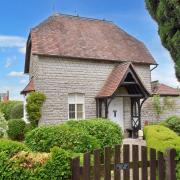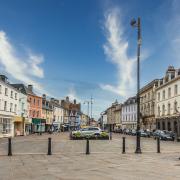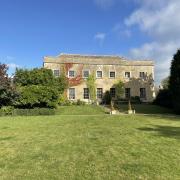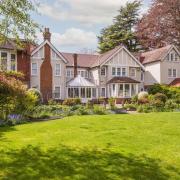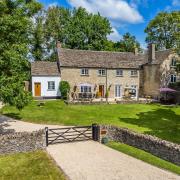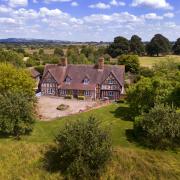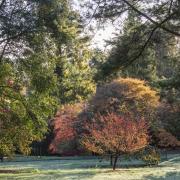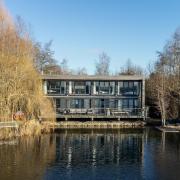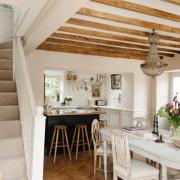A revolution has quietly been taking place in the world of wildflower seeds. For if you thought that sowing wildflower seeds was as easy as planting alliums still out now, the bright purple sensation for instance or mount everest with its beautiful greenish-white flowers and then watching them self-seed vociferously, you might want to think again.
Not that long ago and going back to the time of Miriam Rothschild seeding a wildflower meadow was fraught with difficulty. Access to optimal local wildflower seeds was often scarce and meant begging or borrowing seed from a neighbour or persuading local farmers interested in sowing and collecting wildflower seed to give you some of theirs. As wildflower seed mixes have become more available this has brought problems too. Some mixes have been seen to come from unreliable sources or are too heavily swayed to species such as poppies and other varieties not always indigenous to the region. Worse still imports of wildflower seed mixes from overseas have attempted- but luckily failed - to take a hold against the still prevailing advice to sow only local seed.
But today this has all changed. There is now a plethora of alternative options available for those wanting to seed their own wildflower meadow with companies such as Cotswold Seeds and Emorsgate Seeds, both set up around 50 years ago, now able to supply seed designed to thrive in most local environments.
‘We realised a long time ago that the aspiration of using only local seed to make a wildflower meadow was not going to be easy to fulfil. Harvests can be very fickle. What we do is supply a basic seed stock from a known origin.’ explains Ian Wilkinson, Managing Director and founder of Cotswolds Seeds and FarmEd, a sustainable farming educational centre.

Ian recommends firstly seeding with or looking for yellow rattle to suppress the grass and then if you live in the Cotswolds seeding your meadow with wildflower seeds such as knapweed, field scabious, lady’s bedstraw, selfheal, oxe-eye daisies and the pale pink marsh mallow plant.
Emorsgate Seeds which manages 850 acres of wildflower and grass seed across sites in Norfolk and Somerset is the UK’s largest wild grass and wildflower seed company with a basic list of 222 species ,70% of which are made up of wildflower seeds. The company’s founder, Donald MacIntyre is himself an enthusiastic botanist and ecologist and is currently writing a book on nature recovery and the conundrum of feeding the Earth’s population without destroying the planet. He is married to Jane Lipington, who worked as a horticulturist for Miriam Rothschild so between them they have a sound knowledge of wildflower seeds and work hard to make sure that the genetic makeup of their wildflower seeds is maintained regardless of where they are grown. Expect to pay around £2,000 to £3,000 for 40kg of a meadow mix suitable for chalk and limestone soil, which is the recommended amount you might need for 1 hectare of land.
‘There are two ways of making a wildflower meadow, either spray and plough it or restore it: Then the key to success is scarification and sowing in the autumn incorporating yellow rattle.’ Donald says.
Central to the company’s ongoing work is the new type of brush harvester invented by Donald which harvests the seed for sowing but is quicker and more efficient than traditional brush harvesters. ‘We have recently seen a tsunami of applications for wildflower seeds’ observes Donald.

It goes without saying that choosing and planting wildflower seeds can often be one of the most inspiring and rewarding parts of creating a wildflower meadow. When I meet up with Caryn Hibbert, the founder of Thyme Hotel and Restaurant in the Cotswolds, her passion and enthusiasm for wildflower seeding is palpable. Caryn began planting her own 50-acre wildflower meadow over 20 years ago, but it took 7 years before it began to flourish.
In recognition of her love for the wildflower meadow Thyme is currently running a solo art exhibition entitled ‘And I saw Solomon Seal’ by Endillion Lycet Green. It extolls the beauty of some of the plants in the meadow such as orchid and meadowsweet as well as flowers from the more formal gardens.
‘Alongside producing amazingly beautiful flowers our wildflower meadows here are also now the most wonderful habitat for small mammals, birds and insects as well’, enthuses Caryn.
As part of its Glorious Cotswold Grasslands project the Cotswolds National Landscape at www.cotswolds-nl.org.uk now has its own brush harvester and can help with local seeding and advice using its brush harvested seed from nearby locations. Plantlife at www.plantlife.org.uk also offers an advisory service and can help with seed choices and supply.
READ MORE:
A year in the life of a wildflower meadow: Beginnings




